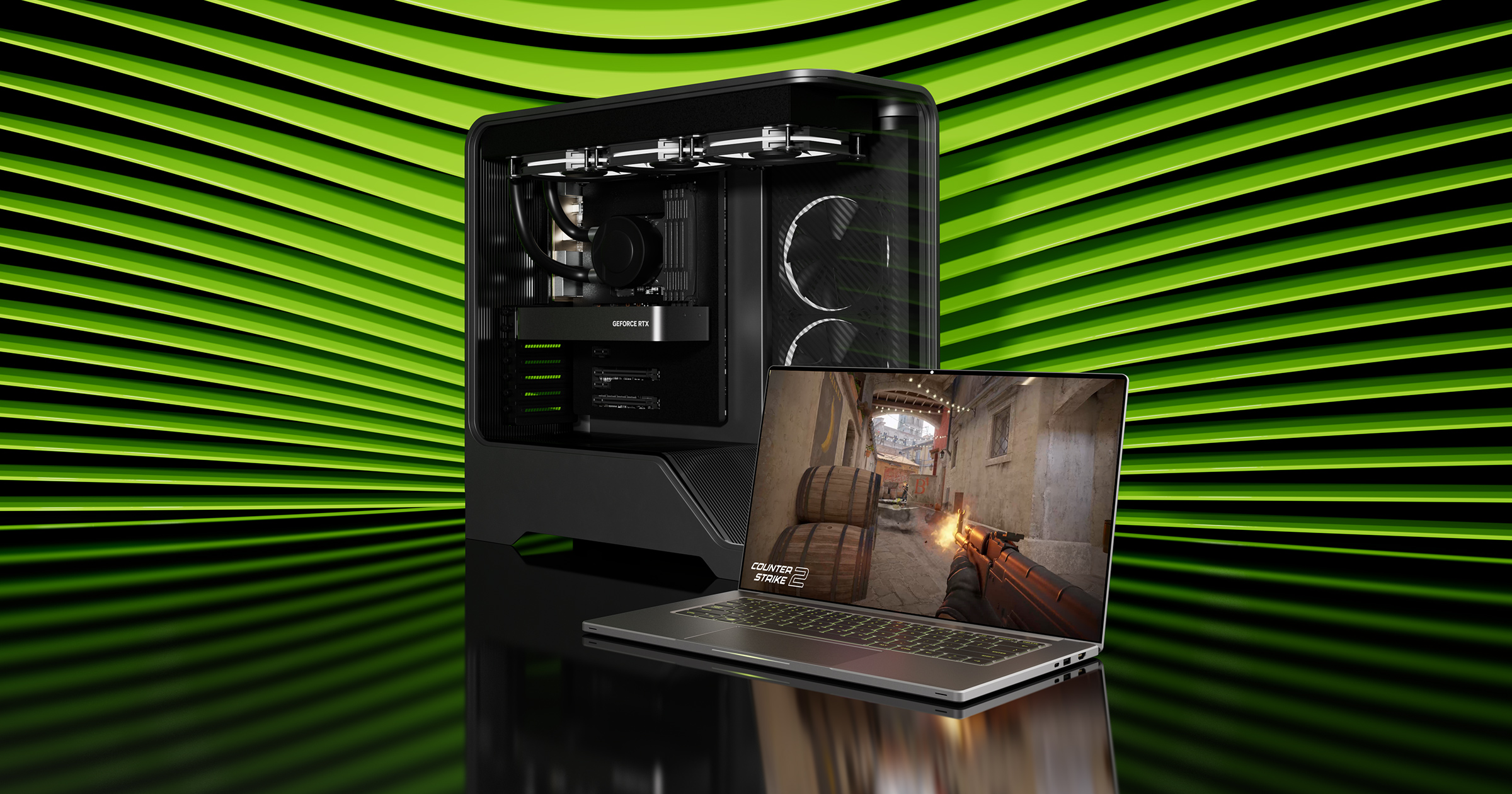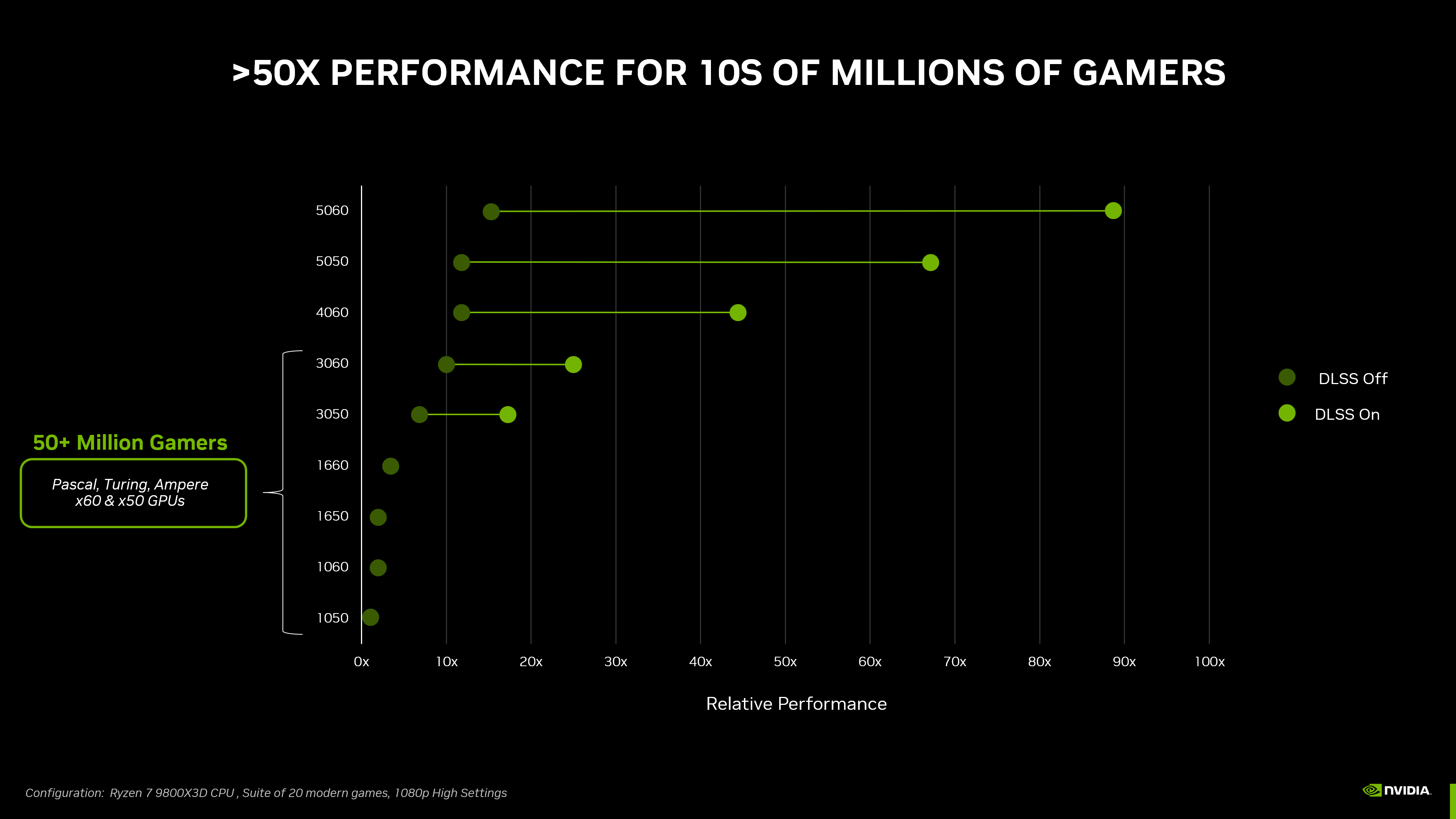GeForce RTX 5050 brings next-gen gaming to the masses with Blackwell laptops starting at $999
Nvidia’s entry-level RTX 5050 makes a strong case for budget gamers, but the laptop variant may be the real star.

After months of speculation, Nvidia’s most affordable Blackwell GPU is official. If you’re thinking $249 sounds like budget pricing, you’re not wrong. But the new RTX 5050 is doing more than just trimming the fat off premium features. It’s giving mobile gamers and mainstream PC builders their first real taste of next-gen graphics tech without the premium price tag.
Officially unveiled Tuesday, June 24, following earlier leaks, the GeForce RTX 5050 drops into desktops and laptops in July, offering 8GB of memory, 4th-gen ray tracing cores, and DLSS 4, all built on Nvidia’s latest Blackwell architecture. That’s a big leap from the aging RTX 3050, and a not-so-subtle flex toward AMD and Intel’s efforts in the sub-$300 GPU war.
But here’s the twist: While the desktop card offers plenty of value, the laptop version might just steal the spotlight.
Blackwell without the price tag
Nvidia isn’t simply repackaging its old silicon and slapping a new sticker on it with the RTX 5050. Both the desktop and mobile versions are built on the same Blackwell family as the flagship RTX 5090. That means tighter memory compression, more efficient compute pipelines, and a massive boost to AI-accelerated gaming via DLSS 4.
For desktops, the 5050 ships with 8GB of GDDR6 memory and a 130W TDP, making it a drop-in option for most entry-to-midrange systems. But it’s in laptops where this card starts punching above its weight.
The RTX 5050 mobile SKU swaps GDDR6 for GDDR7 — a spec usually reserved for higher-tier cards. That change gives laptops faster memory bandwidth, helping offset some of the thermal and power limitations that typically kneecap mobile GPUs.
According to Nvidia’s benchmarks, RTX 5050 laptops running DLSS 4 can hit 150fps in Cyberpunk 2077 with ray tracing enabled, something the RTX 3050 mobile could only dream of, and an impressive flex considering the starting price is just $999, with some models available immediately.
Sign up to receive The Snapshot, a free special dispatch from Laptop Mag, in your inbox.
| Row 0 - Cell 0 | RTX 5050 Laptop | RTX 5050 Desktop | RTX 3050 (2022) | RTX 5060 |
Architecture | Blackwell | Blackwell | Ampere | Blackwell |
CUDA Cores | 2,560 | 2,560 | 2,560 | 3,072 |
Memory | 8GB GDDR7 | 8GB GDDR6 | 8GB GDDR7 | 8GB GDDR6 |
Ray Tracing Cores | 4th-gen | 4th-gen | 2nd-gen | 4th-gen |
Tensor Cores | 5th-gen (DLSS 4) | 5th-gen (DLSS 4) | 3rd-gen (DLSS 2) | 5th-gen (DLSS 4) |
Power | 35W – 100W (configurable) | 130W | 80W (laptop) / 130W (desktop) | 160W |
Target Resolution | 1080p high w/ ray tracing | 1080p ultra w/ DLSS | 1080p medium-high | 1440p high |
Budget gaming laptops just leveled up
If you’ve ever shopped for a gaming laptop under $1,200, you know the compromises: throttled thermals, last-gen GPUs, and chassis designs that scream 2017. Nvidia seems to be targeting that exact pain point.
The RTX 5050 laptop variant not only gets access to full Blackwell features, but it does so in a power envelope ranging from 35 to 100 watts. That opens the door to slimmer, quieter machines that can still handle ray tracing, without setting your lap on fire or turning your fan into a jet engine.
In fact, Nvidia claims that RTX 5050 laptops will outperform RTX 4050 systems in ray tracing and DLSS performance, thanks to architectural improvements and smarter memory design. That’s a quiet but important milestone: Entry-level laptops are no longer locked out of the latest graphical features.
The specs that matter
Across both platforms, the RTX 5050 comes with 2,560 CUDA cores and 4th-gen ray tracing tech, alongside 5th-gen Tensor Cores that power DLSS 4 and Nvidia’s suite of AI upscalers. Support for full AV1 encode and decode means better streaming and media playback, even on lower-end hardware.
But the real kicker here is DLSS 4. By pairing motion reconstruction with frame generation, it allows the RTX 5050 to deliver surprisingly high framerates even in visually demanding titles, and it does so while using less power.
Nvidia’s goal here isn’t just to make games run faster. It’s about enabling new features like path tracing, RTX Remix mods, and real-time lighting, all on hardware that costs less than a flagship smartphone.
Of course, the RTX 5050 isn’t going to dethrone the 4060 or 4070. And for users pushing 1440p or dabbling in content creation, 8GB of VRAM may still be a bottleneck. But that’s not the point.
This card is about accessibility; getting more people onto the Blackwell platform and letting them experience high-end features without waiting for a hand-me-down refresh. And with laptops starting at $999, Nvidia is also firing shots at Copilot+ PC makers, who have largely focused on productivity and AI over gaming.
Whether you’re building your first rig or shopping for a back-to-school gaming laptop, the RTX 5050 marks a long-overdue upgrade to the mainstream GPU stack. And this time, mobile gamers aren’t stuck with second-best.
More from Laptop Mag
- Intel's powerful 2026 Nova Lake chip could render discrete graphics obsolete, and it was just spotted in high-performance laptops.
- Nvidia RTX 5050 GPU leaks suggest a generational leap at a budget price
- The next-gen Xbox console may as well be a gaming PC, except for 1 key difference

Luke is a freelance writer and journalist. Although his background is in legal, he has a personal interest in all things tech, especially hardware and microelectronics, and anything regulatory. Aside from Laptop, he contributes to publications including All About Circuits and EE Power.
You must confirm your public display name before commenting
Please logout and then login again, you will then be prompted to enter your display name.

